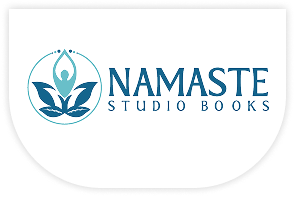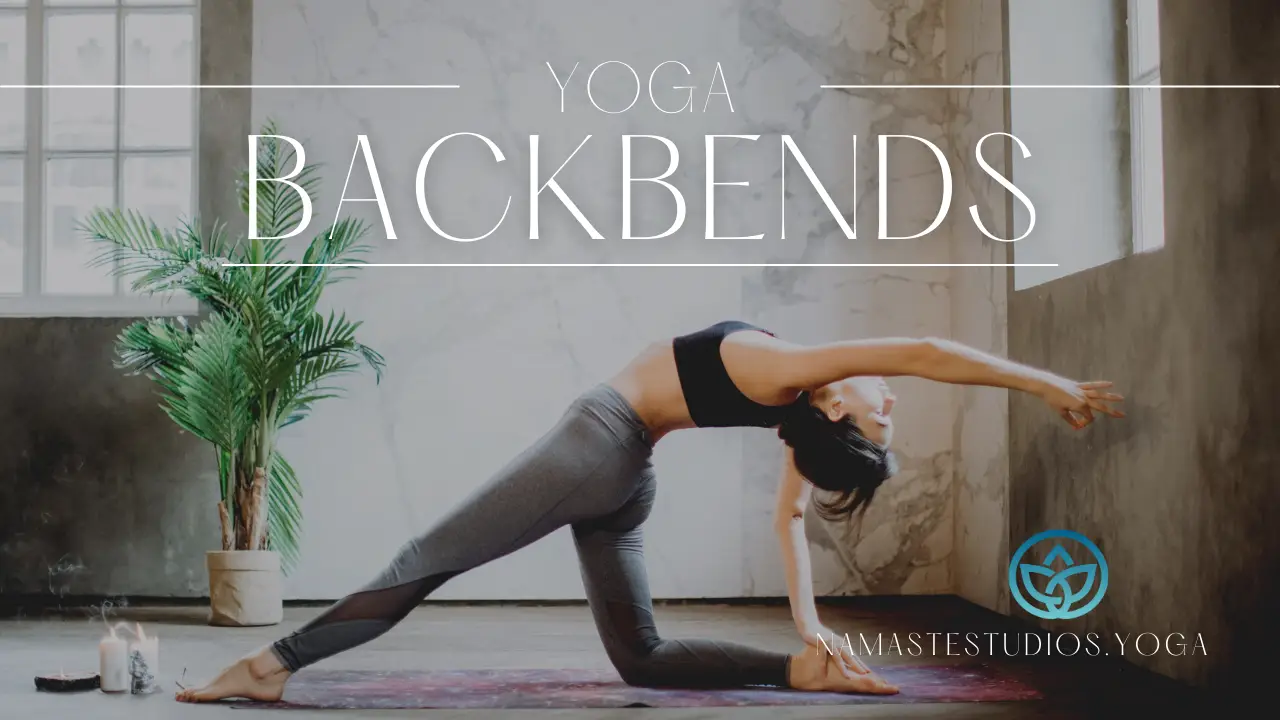Backbends in Yoga Poses (Asanas)
By Dennis Bluthardt, Namaste Studios
Yoga connects your body and mind in wonderful, transformative ways. Backbends, a part of the broader set of yoga asanas (poses), can be a secret weapon for flexibility and strength. Including poses like “Bhujangasana” (Cobra) and “Urdhva Dhanurasana” (Wheel/Upward-Facing Bow) in your yoga and fitness routines can open stretches through the chest and spine, helping to improve posture and alleviate built-up tension. Backbends enable those practitioners who match a pose successfully to move with greater ease and with a broader range of motion, thanks to improved mobility.
Focusing on backbends within the broader context of yoga poses can be essential for a fully balanced and well-rounded yoga practice. Backbends, standing poses, and forward bends are often a part of most yoga classes and practices. Backbends differ as they target the back, core, and legs. However, in many ways, this makes backbends a way of building strength and subtly cultivating greater focus, self-confidence, and self-esteem. As you harness the physical strength and athleticism necessary to control a backbend properly, you also build, support, and strengthen both your physical body and your emotional mind.
Physical benefits such as strength or flexibility go hand in hand with improved focus and emotional resilience, which may help you in your day-to-day life. Others may see backbends as a great way to build similar physical or mental skills or competencies to those cultivated in other, more traditional poses. Others choose backbends as a means of gaining or developing valuable life skills.
Understanding Backbends in Yoga
Backbends are an essential yoga pose, or asana, that involves bending the spine backward. They can be as gentle as Cobra Pose or as challenging as Wheel Pose. Not only do they increase flexibility in the spine, but they also have an excellent way of promoting full body awareness. Many muscle groups must be activated to create the lift (vs giving in to gravity’s pull to slump the chest and shoulders). Backbends are a great way to combat the dreaded desk slump that is all too familiar among students.
The muscular-skeletal benefits alone give us many reasons to maintain a regular backbend practice. However, yogis will know that asana is far more than getting a strong, flexible body. A vast number of other physical health benefits come with practicing backbends.
Spinal health is said to improve. The back-bending shape encourages the spine to adopt “proper” alignment. The poses result in the practitioner developing a more muscular back. The internal abdominal organs are stimulated, which can boost digestion. The circulatory system can function more efficiently. You might gain more flexibility in the shoulders and hips, which will help counterbalance other activities (like running) and create a more functional body.
Then, there is the other side to yoga practice: the heavily intertwined mental side. It is an almost unbelievable claim, but movements and shapes can improve mental well-being. According to yoga philosophy and now, science, of course, they can. Stress and anxiety levels lower with regular backbend practice. Certain poses are considered therapeutic for depression. Gaining the ability to breathe more deeply.
Popular Backbend Yoga Poses (Asanas)
Backbend poses, or asanas, are often used in yoga for their physical and emotional benefits of enabling flexibility, strength, and release.
One such backbend is the well-known cobra pose (Bhujangasana), performed by lying face down, placing your hands under your shoulders, and gently lifting your chest. Be sure to keep your elbows close to the body. For those just beginning, keep your elbows bent. The idea is not to force the lift but to lengthen the spine.
Bridge Pose (Setu Bandhasana) is another backbend that is effective for beginners and advanced practitioners. Lie on your back with your knees bent and your feet hip distance apart. With your feet firmly planted on the mat, lift your hips to the sky. Clasp your hands underneath your back for support. For those just beginning, you can use a block under your sacrum for further stabilization, and for those more advanced, you can add an extra challenge by lifting one leg at a time.
Wheel Pose (Urdhva Dhanurasana) is a more advanced backbend, requiring you to build strength and flexibility. You do this by beginning on your back, bending the knees and planting the feet, and planting your hands beside the head with the fingers pointing towards the shoulders. Press into the hands and feet to peel your body into an arch of space. For those just starting, it’s a good idea to either practice with the support of a partner or practice near a wall for added support.
Last is Camel Pose (Ustrasana), which effectively opens the heart and stretches the front of the body. Use your mat and utilize the pose on bended knees. Reach back for your heels. If this is too intense, place your hands on your lower back for support.
Incorporating Backbends into Your Yoga Practice
Incorporating backbends into your yoga practice creates a well-rounded sense of fitness and flexibility. Yoga sequences that combine postures, such as backbends, forward bends, and twists, are the most balanced. Perhaps you’ll start with a few gentle Child’s Pose stretches. Follow it with a round of Cat-Cow to warm up spinal mobility. Then, move into a backbend with comfortably accessible poses like a Cobra or Upward-Facing Dog. It is also ideal to balance out the effects of backbends with a bit of counterposing.
There are many essential things to understand regarding the nature of performing backbends. First and foremost, Start with a good warm-up and provide your body with the preparation it needs for other, deeper back-bending poses. Include dynamic movements to open the chest and strengthen the core to evoke a genuine internal fire. The developing heat will create more flexibility in the body’s muscular tissues. Other mechanically beneficial warm-ups involve Sun Salutations (Surya Namaskar) because of the specific poses they contain. Sun Salutations also involve Ujjayi breathing, extending the duration of each pose along with a pose sequence.
Second, always pay attention to your body. To help you enhance your intuition, make a point of remaining present in the moment throughout your practice. Pay attention to your inhalations and exhalations. As with any other pose, you want stability (Sthira) and comfort (Sukha) in back-bending poses. Inhale to fill your body with life energy (Prana). Inhaling will also naturally assist in enabling your body to become more comfortable in extending toward one direction. Then, exhale to complement your body’s efforts by making an entrusting segue along the same direction. There is undoubtedly the potential to challenge yourself, but it remains there for you to recognize.
Common Mistakes and How to Avoid Them
Some common downfalls often happen when we start to take on backbends that can lead to injury or discomfort. The first is a tendency to deepen the lower back without any core engagement. Backbends put a strain on our lumbar as there is a higher pressure. The second is that most people often forget about the alignment of the upper body, whether in the shoulders or the neck, leading to a forced, non-spacious length in the neck or a hunch in the upper back/shoulders.
The remedy? All these things! Core strength is keeping a primarily neutral spine (or at least having neutral alignment in mind) and starting with these preparatory poses before you enter more advanced lower back openers. These poses also allow you to build on a concept you’ll be working on in some of the deeper asanas.
Plus, hip flexibility (and a bit of quad opening to help release the pull on the lumbar) certainly helps. Think of moving into these asanas before you get into the rest of your backbends that day as a “warm-up” to get your body in the right mindset.
Pace yourself and know when to use yogic props to explore back bending thoroughly. Blocks or bolsters are a great treat to “rest” mid-pose and set you up for alignment on a bigger scale in some of the more demoing asanas.
Of course, listen to your body first and foremost and lean into the pain gradually. When you’re practicing backbends to any degree, you don’t want all the sensations in your body to lead you to rush into your doctor’s office or double up on your weekly chiropractic visit. Because of your spine’s natural “realignment/misalignment,” you must be in tune with your body. Understanding your limits and discerning where you can push through periods of pain or stiffness makes you develop a genuine relationship with your body.
Know your limit. If you want your backbends to heal and improve alignment, engage with your body first!
When one hears the word backbend, the images that likely come to mind are the Wheel pose, Bridge pose, or Cobra pose, typical yoga poses that entail an arched spine. However, such poses are necessary to preserve our spine’s longevity, flexibility, and strength, which are integral functions for minimizing injury and maintaining good posture!
Stretching our spines in the reverse of what we often do, such as with a rounded upper back, helps to counteract these postures. Additionally, we minimize any tension held by an encumbered front body when we create an open chest and shoulders, and we find relief temporally in every pose. We can also charge these backbends by seeking support from the abdomen or other muscle groups. Engaging the core can show users how to discern this movement as embodied. Thus, backbends enhance circulation, but they also prompt a change in the physical and emotional body, ultimately offering great functional variety that we can use to our advantage within the practices we enjoy most!
For the reasons mentioned above, consider the last time you may have thrown some backbends into your routine. If you’re new to these poses, you might start practicing them or introduce more variety by starting simple and then, down the line, working your way up to more challenging poses.
Additionally, I want you to comment on the last time you’ve felt motivated to try a backbend. What prompted this? If you feel comfortable sharing, please do so! These comments can inspire other practitioners. I think that backbends, with this effort approach, too, feel valuable within the practice, providing challenge everywhere.

